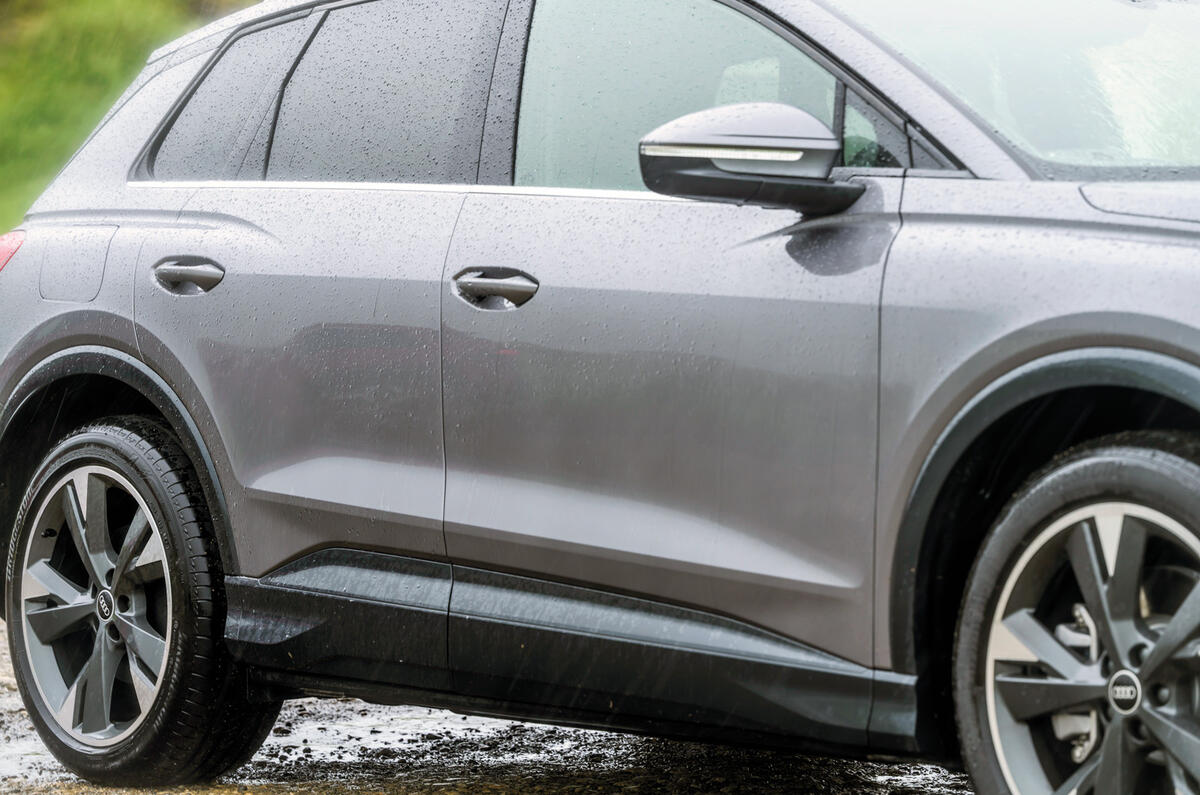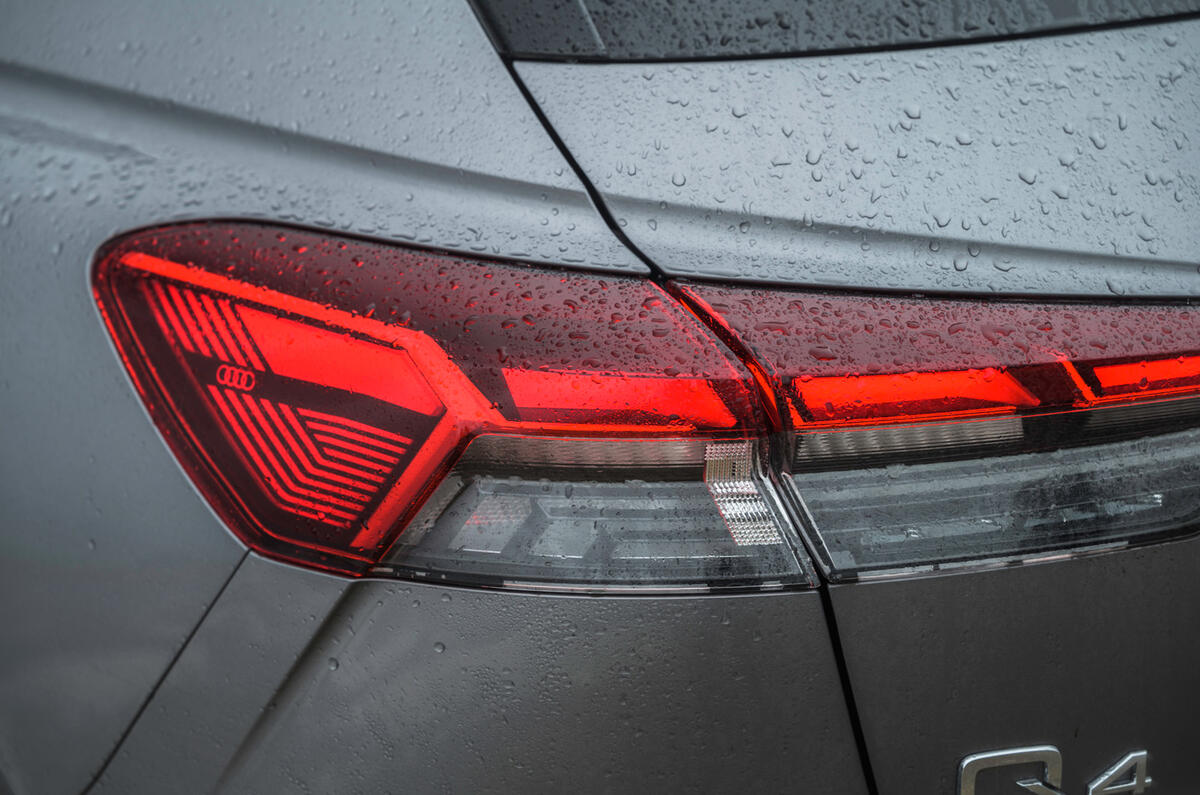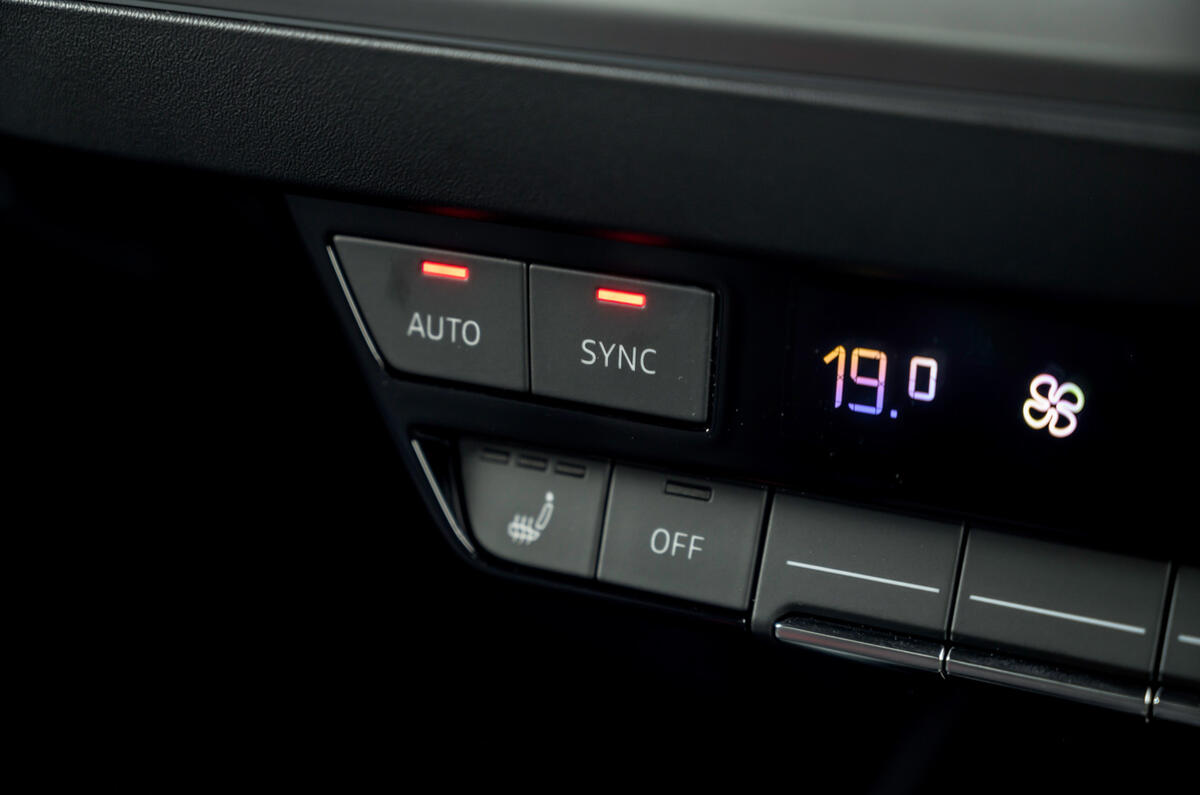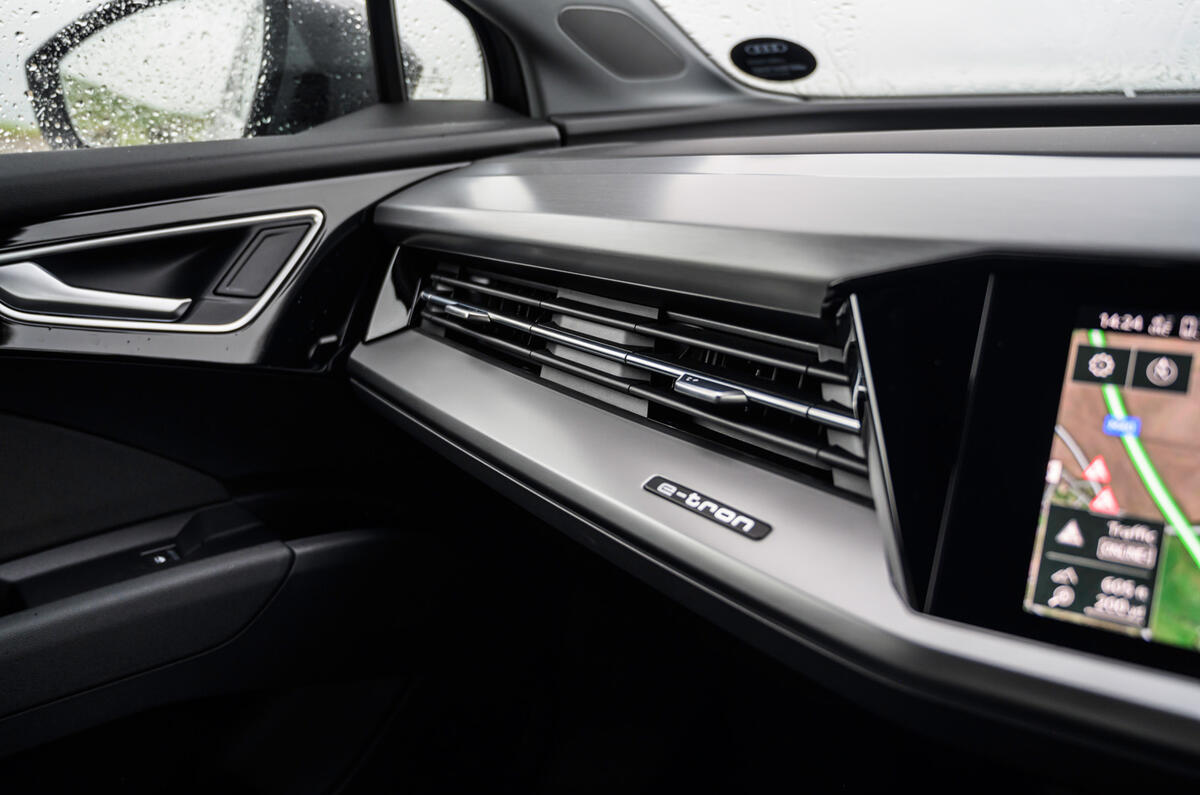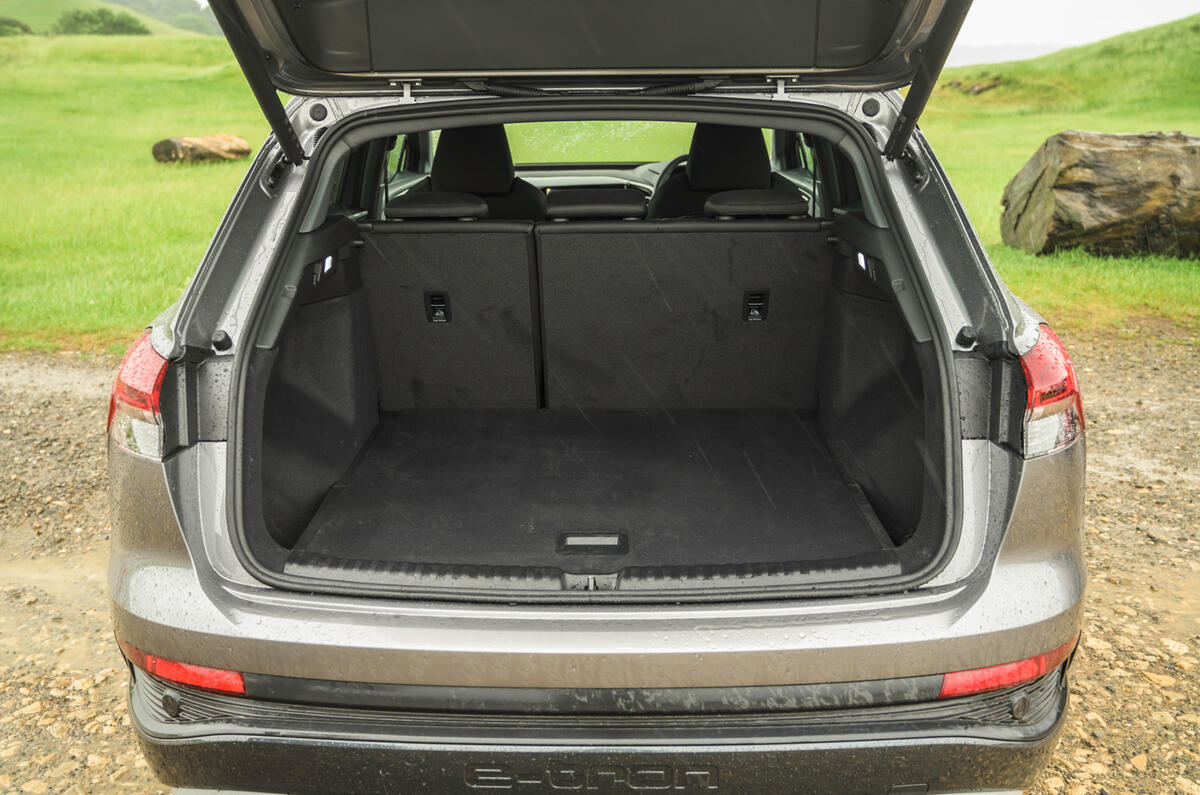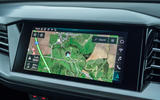Like one or two of the other mid-market, clean-sheet EVs with which it competes, the Q4 E-tron reveals itself to be a really roomy car when you start opening its doors and boot.
For cabin space, it could even rival the most practical mid-sized, five-seat SUVs in the class such as the Honda CR-V. Its hip point is convenient and its roofline high, making for abundant head room and leg room in the front row, and there is plenty of space in row two for adults to be comfortable in.
The boot is more shallow than some SUV regulars might be used to as a result of what is packaged below. It still offers a generous 520 litres of carrying capacity below the load cover, though, as well as a folding, removable boot board that delivers a flat loading area when the seats are folded, and further storage space underneath.
When seated at the wheel, you will find yourself in a very comfortable, adjustable and well-supported driving position, but the dimensions of the car around you do feel a little curious.
The dashboard is bulky and imposing, stretching towards you from the distant base of a steeply raked windscreen, and seeming so large and flat that it could almost double as a passenger-side dining table.
Being equally steeply raked and bordered by large door mirrors, the A-pillars create large three-quarter blindspots on either side of the screen itself, and can be hard to see around at roundabouts and junctions. The bonnet, meanwhile, is short and concave, dropping away to make it quite hard to judge the length of the car’s nose when parking and manoeuvring.
In its habitual style, Audi has packed plenty of technology into the Q4’s cabin and has been fairly bold with the geometric, tiered appearance of the asymmetrical dashboard. This is a smart-looking, pleasant interior in broad terms, but its material quality levels and fit and finish might not quite meet your expectations of a £45,000 premium family car.
Both hard and soft-touch materials feature, but the former look and feel surprisingly rough and plain. One or two sharply edged pieces of trim, and fitting gaps between mouldings, of the sort that we’re not used to finding in an Audi, also appear in the car.
Audi Q4 infotainment and sat-nav
The Q4 E-tron’s provision of in-car technology is good, even if much of it comes at extra cost. You get fully digital instruments, which work well and are very clear and crisp, and a 10.1in MMI Navigation Plus infotainment system as standard.
Apple and Android smartphone mirroring is also standard, but wireless smartphone charging only comes as an option.
The central touchscreen is mounted quite high and is smoothly integrated, but it doesn’t offer an obvious place to anchor an outstretched hand, making it less comfortable to use than it should be.
Some functions also require a precise input to switch on and off; and it can be hard to hit the right square centimetre of the screen with your left hand when the car’s moving at speed. A few more physical controls would aid usability.
Only by having a Vorsprung-spec car or by paying £1200 for Audi’s Technology Pack do you get the Q4’s augmented reality head-up display, which projects navigation arrows onto the car’s windscreen. They’re not as distracting in practice as they sound, and often help to highlight a side street or island exit.








